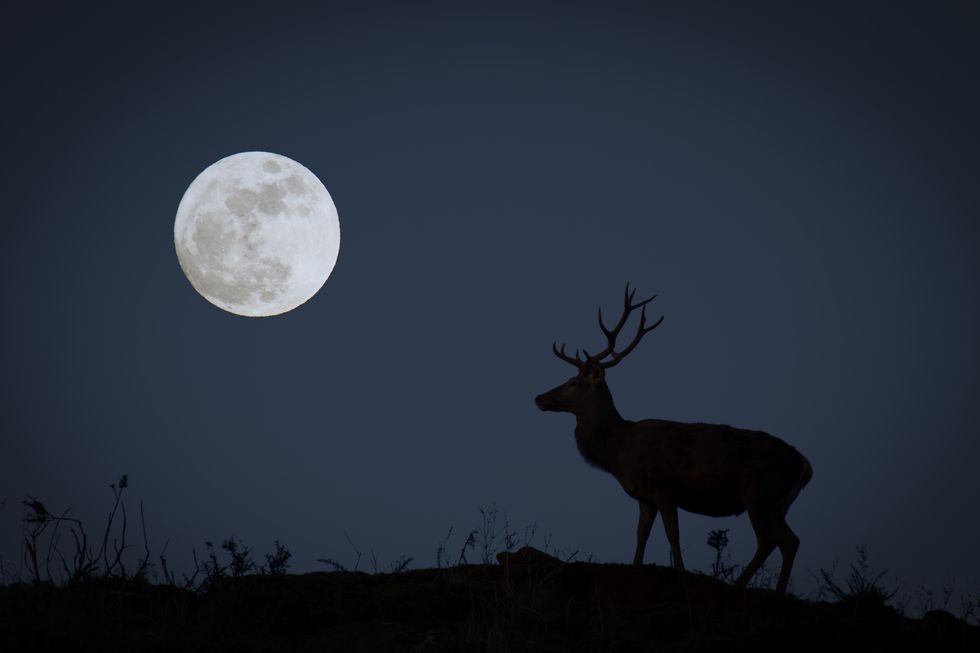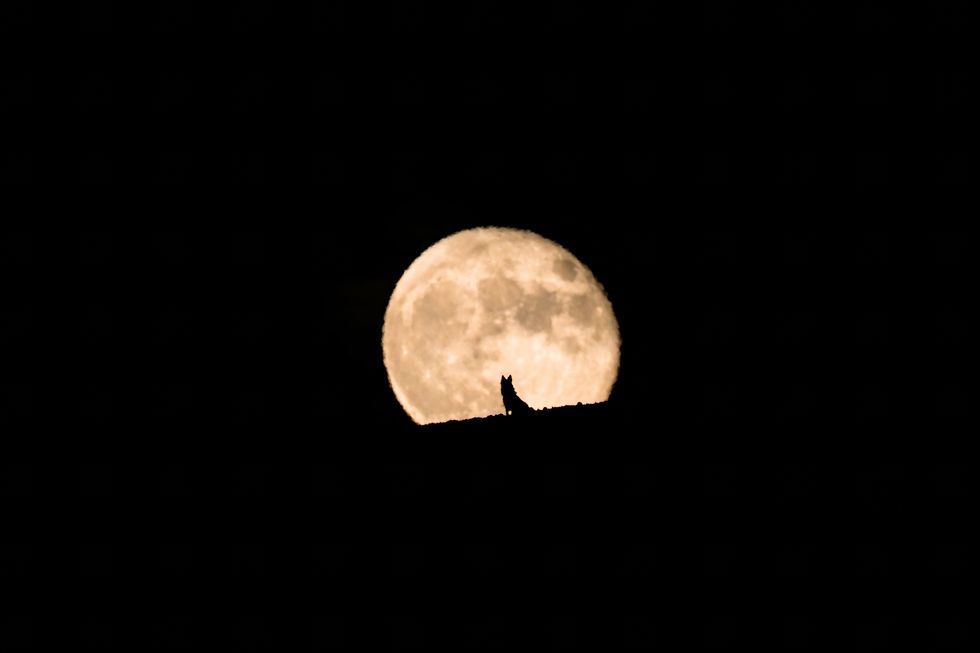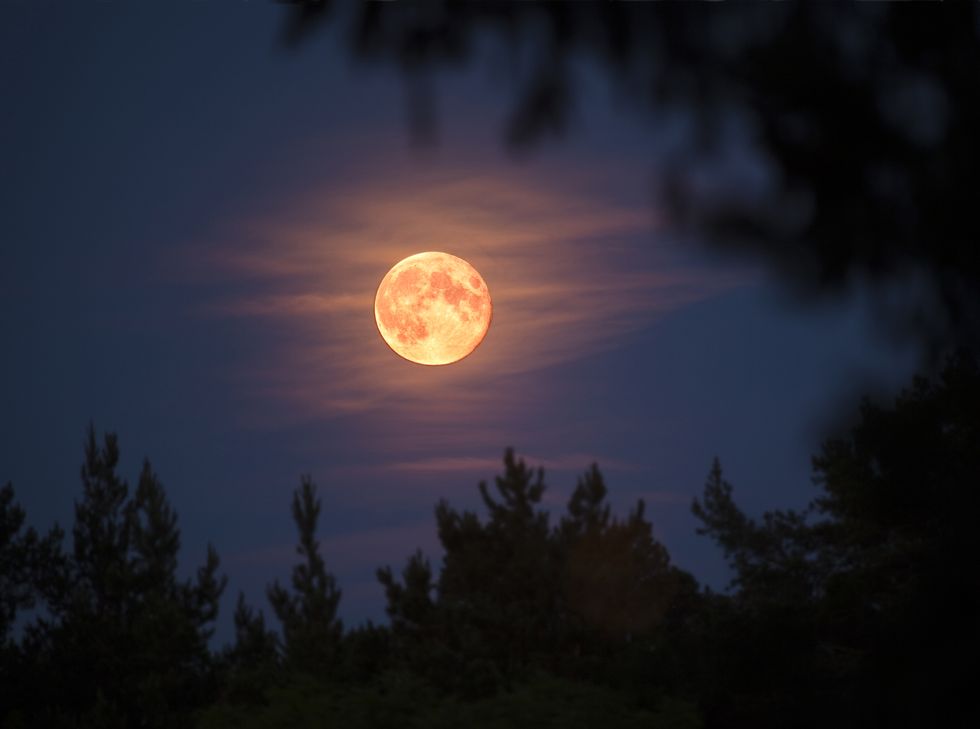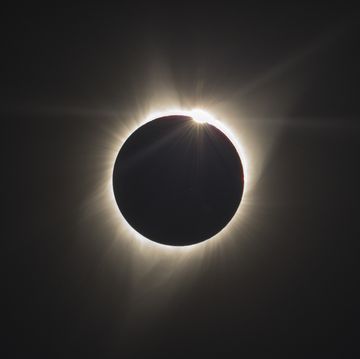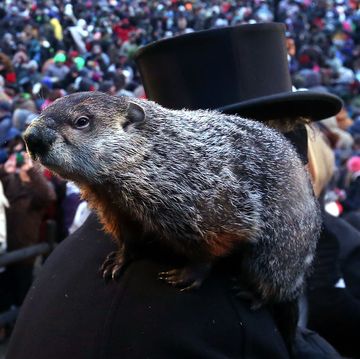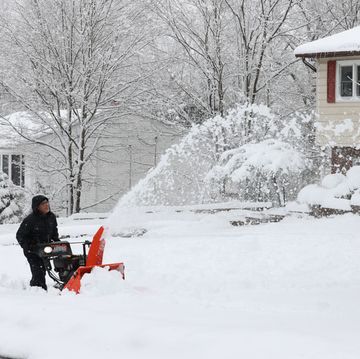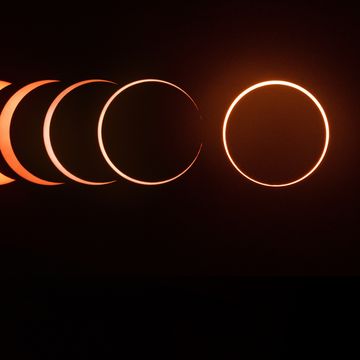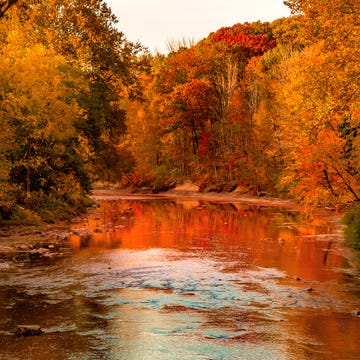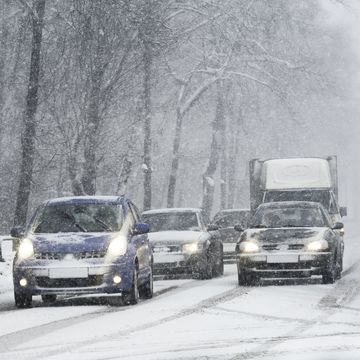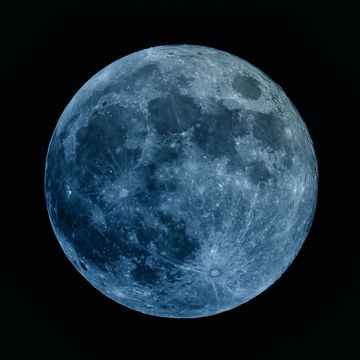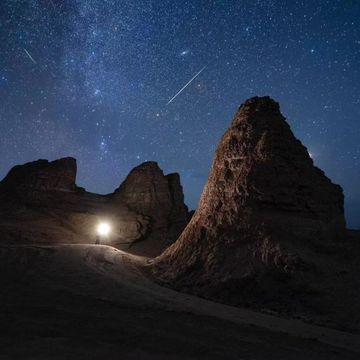This weekend, take a moment to enjoy the full Hunter's Moon, which peaks on Saturday, October 28, but will look full for several days, starting Friday.
No, it's not a supermoon, and most of us stateside won't be able see the partial lunar eclipse happening elsewhere in the world (if you're wondering if you're in a state that can see the penumbral stage, we've got you covered). Still, there's plenty of neat history and noteworthy features about this full moon that make it worthy of moon gazing—even if you head inside for a hearty slow-cooker dinner afterward instead of heading out for the hunt.
What is a Hunter's Moon, and what does it mean?
The Hunter's Moon comes once a year and is always the next full moon after autumn's Harvest Moon. The name comes from the Algonquin Native American tribe, says The Old Farmer's Almanac, and reminds us that traditionally in many cultures this is the time to hunt and store up meat for the long winter.
Though usually in October, the Hunter's Moon can fall in November on rare occasions. That's because, like the Harvest Moon, its date is determined by the autumn equinox, one of the two times of year when the sun aligns with Earth's equator. The Harvest Moon is the full moon closest to the fall equinox, and the Hunter's Moon follows.
October's moon might also be called the Falling Leaves Moon, the Drying Rice Moon, or the Freezing or Ice Moon. Another name, the Migrating or Travel Moon, is thought to nod to the seasonal southernly migration of animals and birds but, according to NASA, may also refer to northern Native American tribes leaving mountainous areas ahead of the cold winter.
What is special about a Hunter's Moon?
The Hunter's Moon shares a unique characteristic with the Harvest Moon: For several nights in a row, a full or nearly full moon rises around sunset in mid to high northern latitudes. (Check your local moonrise time for the exact time.) This is significant because, other times of year, the moon can rise up to an hour later each passing day due to the angle of the moon's orbit in relation to Earth's orbit around the sun, says Astronomy.com.
Traditionally, the early evening moonlight provided by the Hunter's Moon aided hunters during a crucial time for storing up food, just like the Harvest Moon provided extra light to farmers bringing in the harvest. Also around this time, says The Old Farmer's Almanac, animals were drawn to scraps leftover from the fall harvest, and the cleared fields made them easier for hunters and other predators to spot.
You might also notice the Hunter's Moon looking particularly big and orange. Both characteristics result from viewing the moon when it's low in the sky. The moon illusion makes the moon appear larger when it's near the horizon. Plus, you're moon gazing through a thicker layer of Earth's atmosphere, versus a thin layer when the moon is high in the sky, and our atmospheric particles add color. Think about it: The days are shorter, so you're probably wrapping up your day and heading home around sunset—the same time the Hunter's Moon is rising above the horizon and sure to catch your eye.
Once in a blue moon (literally), the Hunter's Moon will fall on October 31, aka Halloween, and since the lunar cycle is 29.5 days, such an occurrence will always be a blue moon (the second full moon in a month). But don't expect a full Halloween Hunter's Moon any time soon. It only happens every 18 to 19 years, and the last one happened in 2020.
What is the Feast of the Hunter's Moon?
Of course, the fall harvest and hunting efforts to store up extra meat for winter make the Hunter's Moon a natural time for feasting. Today, the Feast of the Hunters' Moon is an annual event on the banks of the Wabash River near West Lafayette, Indiana. It commemorates a mid-1700s gathering of French fur traders and Native Americans at Fort Ouiatenon, the first fortified European outpost in the area.
If you plan a trip, expect 18th-century reenactments, an authentic feast, and French and Native American dance and music, among other activities. But take note, this autumn event is not necessarily timed with the full Hunter's Moon—in 2023, the event took place October 7 and 8.
How can you see the Hunter's Moon partial eclipse in 2023?
Though no part of the United States will be able to view the partial lunar eclipse on October 28, some states, including the Northeast and areas as far west as Michigan and as far south as South Carolina, will be able to see the end of the eclipse's penumbral stage (that is when only the Earth's diffuse outer shadow is cast on the moon). This means that, for those who can see it, the moon will look a little darker than normal. The change will be very subtle compared to a total lunar eclipse.
States that can observe the penumbral stage of the partial lunar eclipse include Connecticut, Maine, Massachusetts, Maryland, New Hampshire, New Jersey, New York, Rhode Island, Pennsylvania, and Vermont. Parts of Michigan, North Carolina, Ohio, South Carolina, Virginia, and West Virginia will also be able to see it.
The website Time and Date has an interactive eclipse map that allows you to zoom in and click on your specific location so you know exactly when to look.

Terri Robertson is the Senior Editor, Digital, at Country Living, where she shares her lifelong love of homes, gardens, down-home cooking, and antiques.

